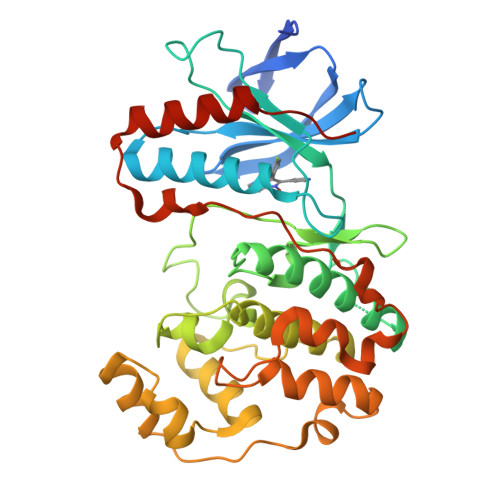Design and synthesis of 4-azaindoles as inhibitors of p38 MAP kinase.
Trejo, A., Arzeno, H., Browner, M., Chanda, S., Cheng, S., Comer, D.D., Dalrymple, S.A., Dunten, P., Lafargue, J., Lovejoy, B., Freire-Moar, J., Lim, J., Mcintosh, J., Miller, J., Papp, E., Reuter, D., Roberts, R., Sanpablo, F., Saunders, J., Song, K., Villasenor, A., Warren, S.D., Welch, M., Weller, P., Whiteley, P.E., Zeng, L., Goldstein, D.M.(2003) J Med Chem 46: 4702-4713
- PubMed: 14561090
- DOI: https://doi.org/10.1021/jm0301787
- Primary Citation of Related Structures:
1OZ1 - PubMed Abstract:
Inhibition of the biosynthesis of proinflammatory cytokines such as tumor necrosis factor and interleukin-1 via p38 has been an approach toward the development of a disease modifying agent for the treatment of chronic inflammation and autoimmune diseases. The development of a new core structure of p38 inhibitors, 3-(4-fluorophenyl)-2-(pyridin-4-yl)-1H-pyrrolo[3,2-b] pyridine, is described. X-ray crystallographic data of the lead bound to the active site of p38 was used to guide the optimization of the series. Specific focus was placed on modulating the physical properties of the core while maintaining potent inhibition of p38. These efforts identified 42c as a potent inhibitor of p38, which also possessed the required physical properties worthy of advanced studies.
Organizational Affiliation:
Department of Medicinal Chemistry, Roche Palo Alto LLC, 3431 Hillview Avenue, R6-201, Palo Alto, California 94304, USA. alejandro.trejo@roche.com

















